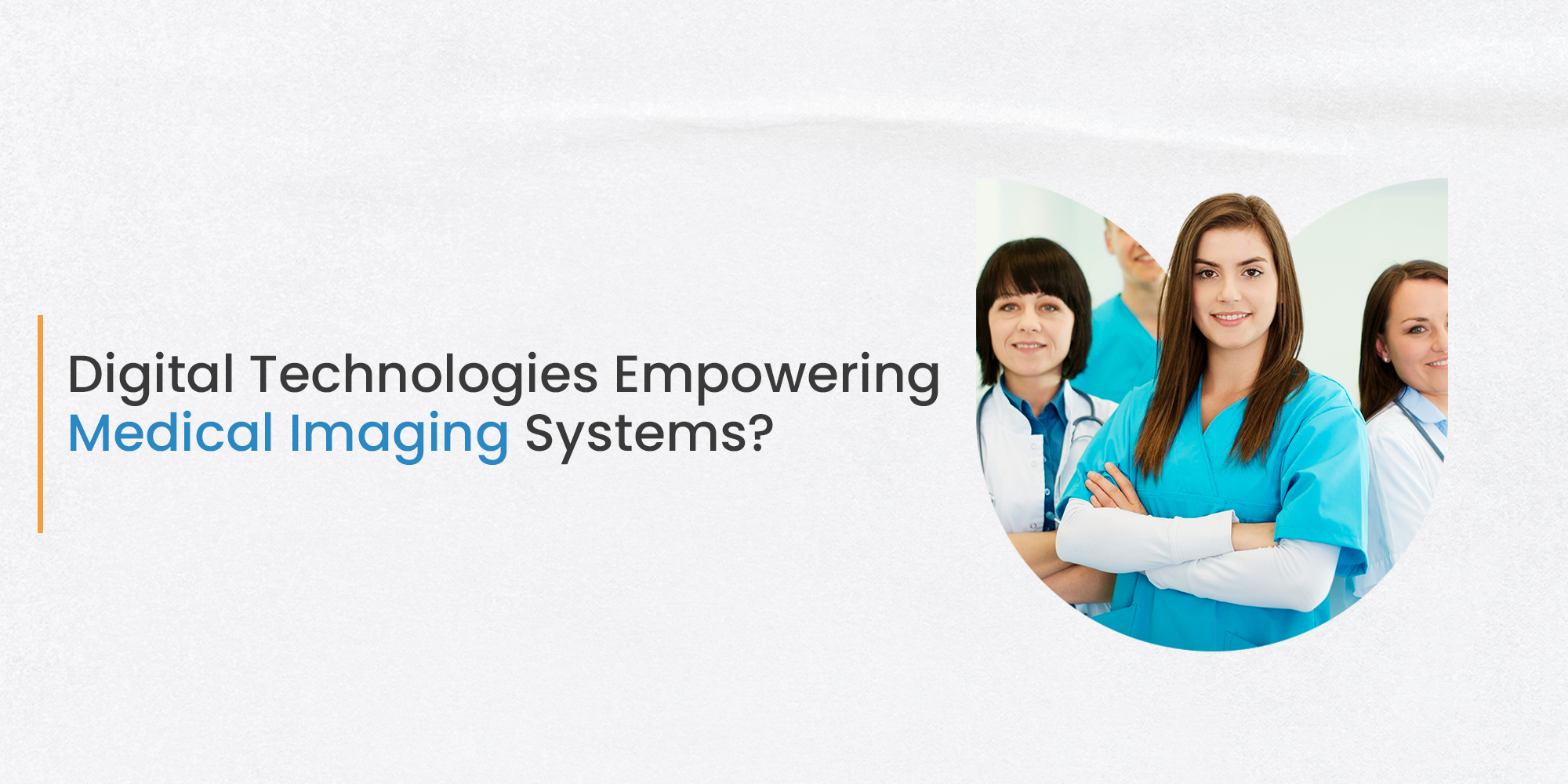Healthcare has always been the most dynamic industry. Thanks to cutting-edge technology, healthcare service providers can mass-produce efficient medical gadgets. According to research by Markets and Markets, the worldwide market for diagnostic imaging is expected to grow at a CAGR of 5.7% between 2021 and 2026, from USD 26.6 billion in 2021 to USD 35.0 billion in 2026.
The first perk that comes to mind when we consider new healthcare technologies is an improvement in quality of life. By shortening treatment and recovery time, advancements such as digital monitoring systems, cutting-edge scanning equipment, minimally invasive operations, etc., have definitely enhanced the quality of life.
Such solutions provide us with the ability to live a healthy and productive life as technology advances. As machines infiltrated our lives and we entered the digital age, hospitals and medical professionals began using technology tools to provide patients with effective health care.
Global Digital Health- Transforming Healthcare
Digital health utilizes technical technologies to provide consumers with a holistic healing and wellness solution. These technologies include orally administered sensors, devices for tracking crucial readings, health apps that may be used on mobile phones, caregiver’s robots, technology-driven medical imaging, electronic records, etc.
Here Are Some Advantages of Incorporating Digital Health Technologies:
- Allows healthcare professionals to more effectively manage the patient’s disease and concerns
- An excellent tool to monitor, track, and ultimately manage chronic conditions.
- Contributes to the early diagnosis of new diseases and conditions
- Early identification of the deterioration of current conditions, etc.
- Facilitates individuals’ access to and tracking of their health-related data more promptly.
- Offers a cost-effective and efficient method of providing treatments and long-term support to individuals with critical illnesses or chronic conditions.
- Permits professionals to deliver a tailored treatment plan and prescription to each patient based on his/her health data. Assists individuals in maintaining or enhancing their quality of life by monitoring particular health indicators such as blood pressure, heart rate, etc.
Medical Imaging Is Becoming A Primary Focus – In The Field of Digital Health
Medical imaging is a discipline that has gained considerable relevance in digital health. It refers to the technologies used to view the human body for the purposes of diagnosing, monitoring, or treating medical disorders. It has altered how medical specialists and healthcare professionals see and comprehend the human body.
When a physician needs to diagnose an illness, they often order a diagnostic test, such as an X-ray, MRI, or CT scan. In addition to a doctor’s expertise and experience, medical imaging plays a crucial part in the process of diagnosis. In addition, it assists the physician in determining the treatment plan and an expected recovery period. It provides an inner, non-invasive overview of the body that an exterior examination cannot. After administering therapy to a patient, medical imaging may assist the physician monitor the treatment’s efficacy.
In a nutshell, medical imaging aids in the diagnosis, creation of an effective treatment plan, and monitoring of the patient’s progress. Here are a few instances.
- It aids in the early detection of fatal illnesses such as breast cancer. Simple mammography may help diagnose breast cancer, which has contributed to a significant decline in breast cancer-related deaths over the last three decades.
- Facilitates difficult surgical operations for surgeons. For instance, endoscopic sinus surgery is very challenging due to the large sinus network. Nevertheless, using medical imaging, a CT scan allows the surgeon to closely evaluate the region prior to the treatment. This improves his preparedness for the difficult surgery.
- Sonographic imaging for pregnant women. Doctors can determine the health and development of the fetus in the womb. Early in pregnancy, physicians may notice problems.
Tele radiology
Digital imaging expedites and enhances the transmission of diagnostic information. Electronic photos might possibly be seen on a screen immediately after capture, as opposed to waiting for film to be developed. In practice, photos may be seen in less than a minute after being captured. Digital photographs may be seen concurrently from several places, as opposed to being restricted to diagnostic information on a single piece of film. This improves clinical treatment by allowing many care providers to examine information that was previously only available on a single film. Additionally, consultations and discussions may take place from several places, either inside the hospital or from satellite facilities.
With the development of high-speed networks and the internet, remote watching is now possible almost everywhere with a network and/or internet connection. Radiologists are not required to be physically present at the hospital at all times when they have access to pictures remotely. Teleradiology’s constraints are mostly technology-related, such as remote access, network speed, and file size. With the usage of modern technology, these restrictions are often negligible. Even tiny facilities may have constant access to high-quality radiological interpretation via the use of teleradiology.
Compared to film, the capacity to modify a digital picture gives a tremendous diagnostic advantage. Software on viewing workstations enables the radiologist to zoom in on particular regions, use digital subtraction to increase picture clarity, stack images for serial viewing, and boost contrast, among other advantages. It is feasible to precisely measure items such as aortic aneurysms. Additionally, significant clinical results might be documented for clinical and educational reasons. Hence, they can get it.
The evolution of medical imaging technologies parallels the development of technology. The future belongs to medical professionals who are able to comprehend and use these technologies to provide better and more complete healthcare services.

